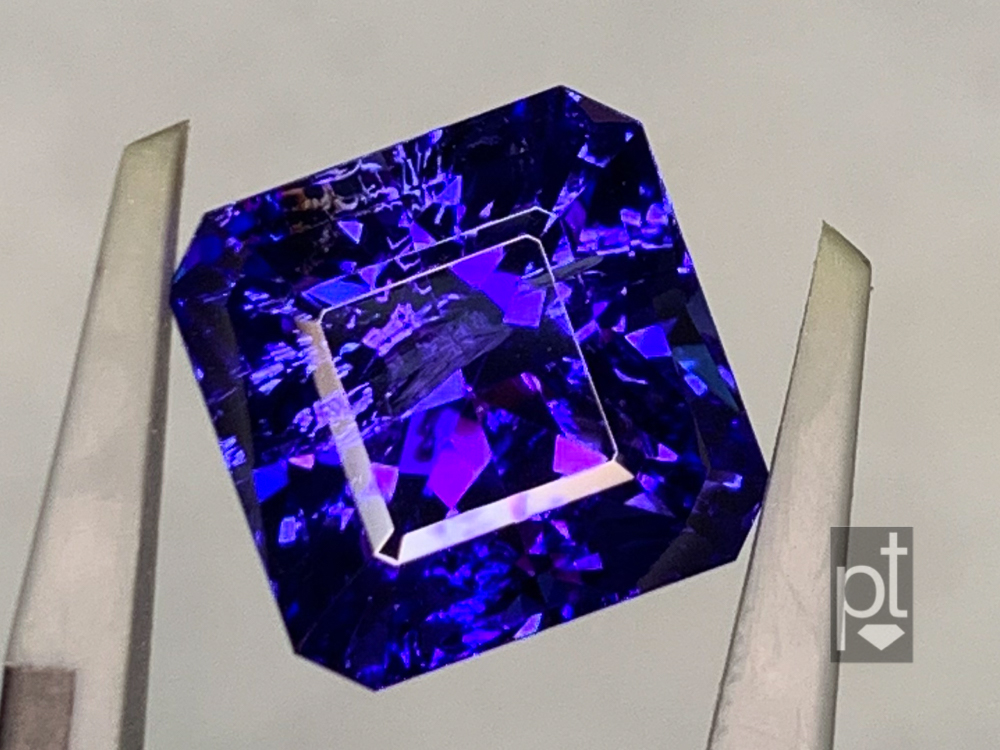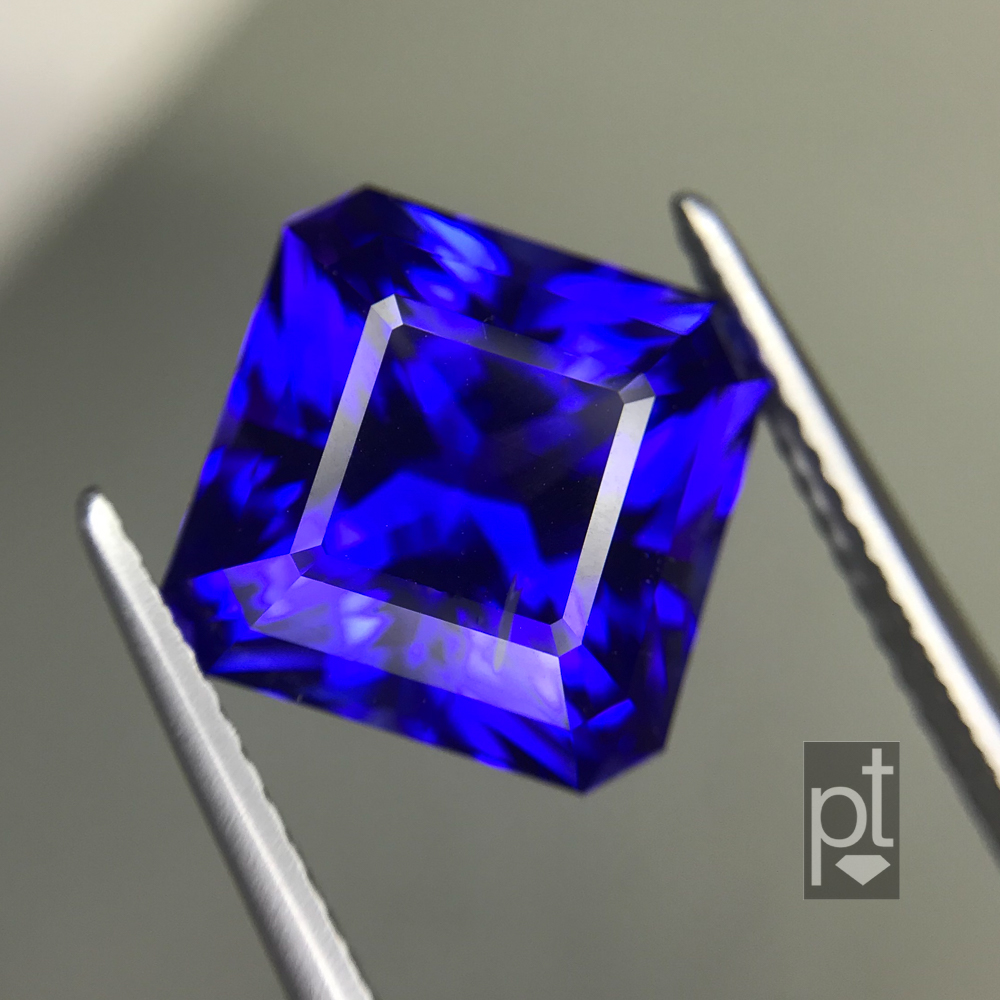
Tanzanites and steam cleaners don’t play well together.
Here is a high-end 6ct tanzanite I recut from a heavily worn square princess into a custom square radiant for a jeweler. The stone was mounted by the jeweler and proudly delivered to his client — who immediately noticed the large crack down the middle of the stone. Nothing fun happened after that point.
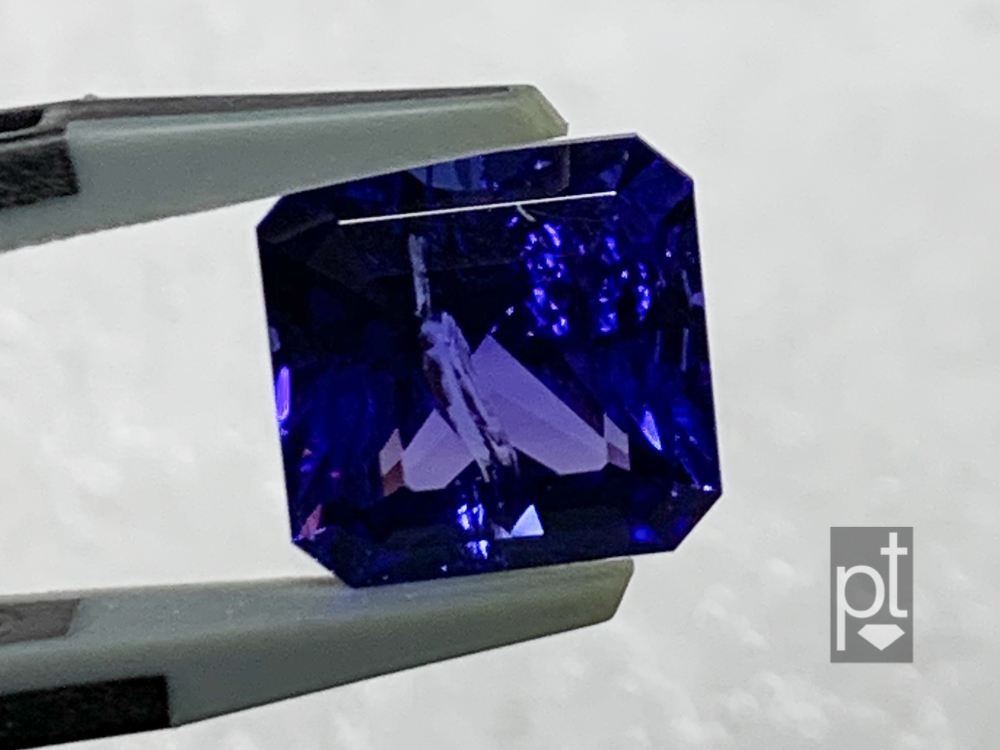
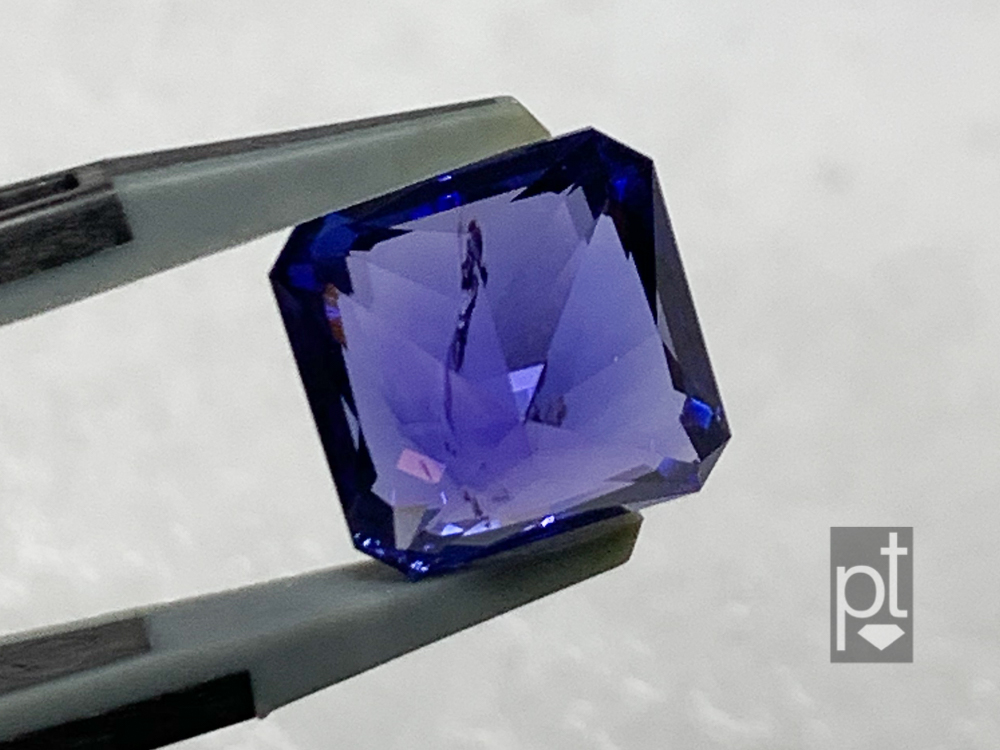
In researching what went wrong, we found that the tanzanite was successfully recut and mounted without any problem at all. But in this particular jewelry shop, it is a standard procedure to pass a newly finished ring under the steam machine for a final shine. Unfortunately, that finishing touch finished off the tanzanite. The worst part is that all of this could have been avoided.
Heat Shock vs. Heat Sensitivity

Like many stones, tanzanite is sensitive to heat shock. Put another way, tanzanite is sensitive to sudden, radical changes in temperature — e.g. suddenly going from room temperature to the scalding steam of a cleaner.
But don’t confuse “heat sensitivity” with “heat shock”. A heat sensitive gem, opal for example, will be damaged by high temperatures. Tanzanite, however, is not heat sensitive. In fact, dull brown zoisite is routinely heated to around 700C/1290F to change it’s color to the prized purple-blue of tanzanite. Heat treatment is a slow process; the gem’s temperature is slowly ramped up from ambient to 700C, held there for some time, and then allowed to cool at its own pace afterwards. Although the temperature is quite high, the heat comes on slowly and the stone is not harmed.* Slow & gentle is very different from suddenly being stuck in a super-heated, pressurized stream of steam.
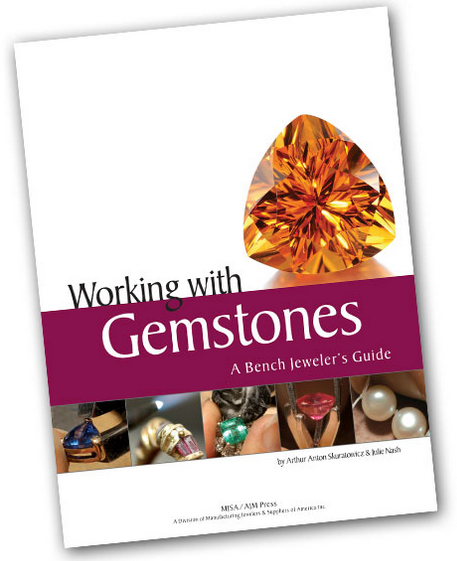
When working with colored gemstones at the bench or behind the counter, it’s important to know the limits of the gem in front of you. Taking a few minutes to look up the details can save both headaches & money later. There are some excellent reference books and charts that can help you out. One book that I recommend to my jewelers is a MJSA publication, Working with Gemstones by Anton Skuratowicz and Julie Nash. (No affiliation, I just like the book!)
So the moral of this story is: beware heat shock. For stones like tanzanite, avoid sudden temperature changes (e.g., room temp to hot ultrasonic). If you have to heat up a tanzanite, do it slowly & gently.
*I am speaking in generalities here. Inclusions and/or structural flaws in the rough may well expand and damage a stone during heat treatment. A point well worth keeping in mind if you are faced with a stone that should be heat stable, but has inclusions of note.
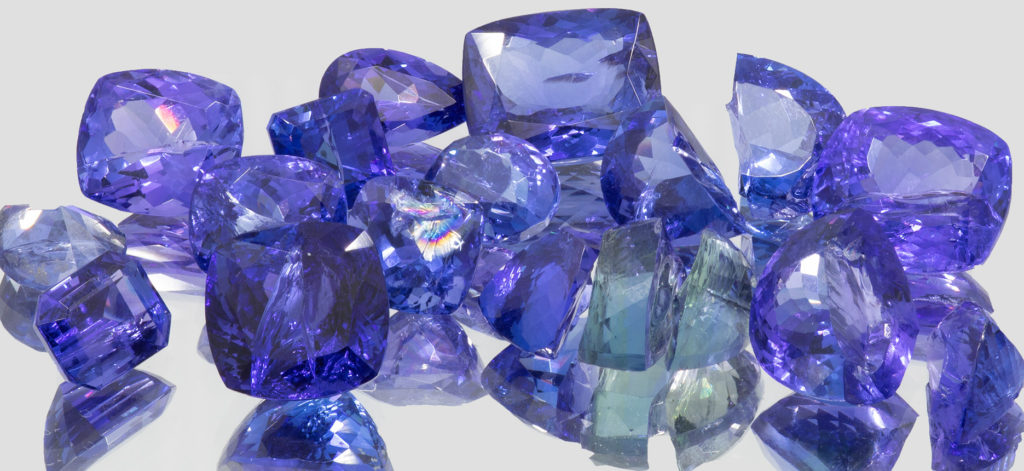
Sometimes, heat shocked tanzanites recoverable. Here’s a success story: 82ct Tanzanite Transformed

